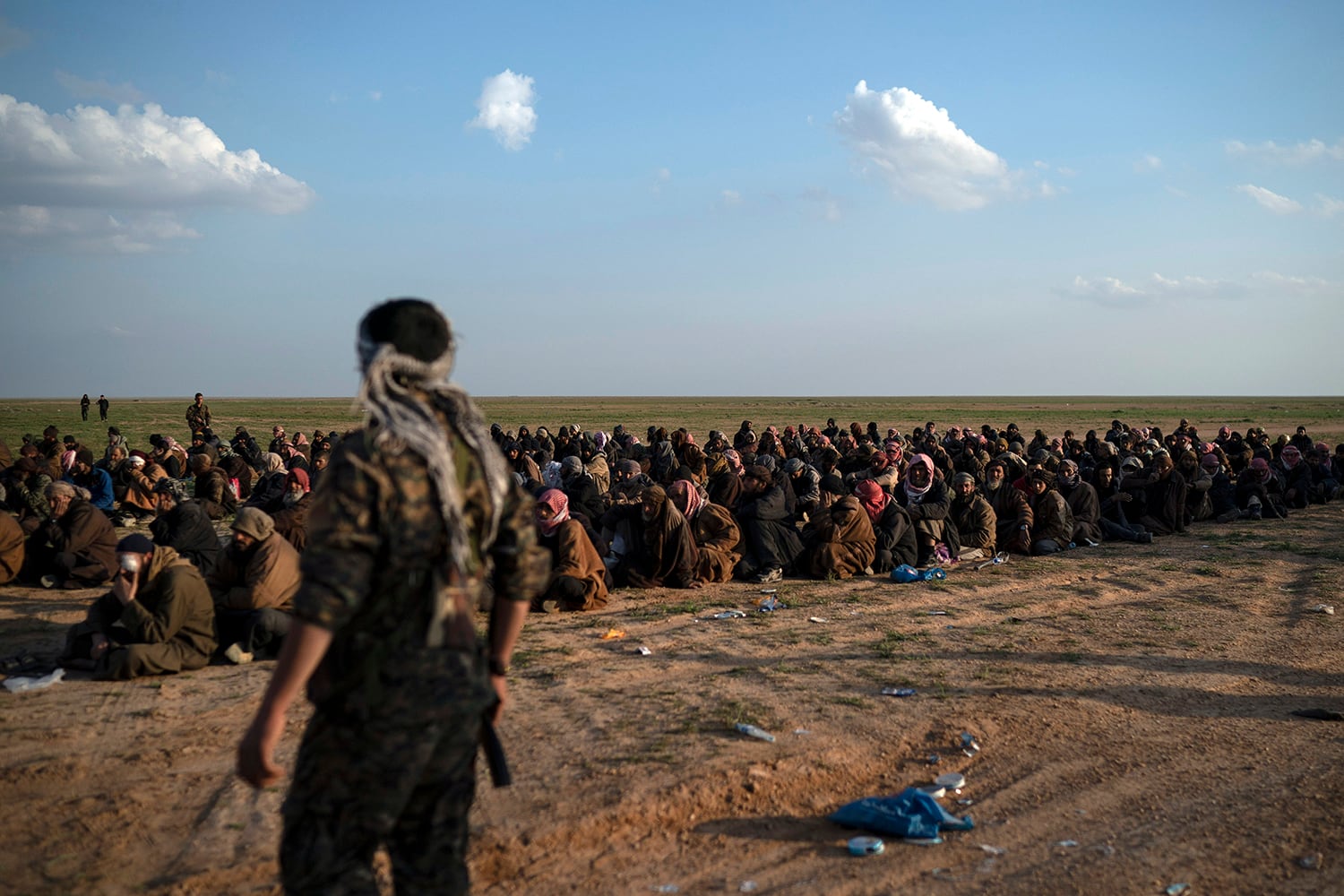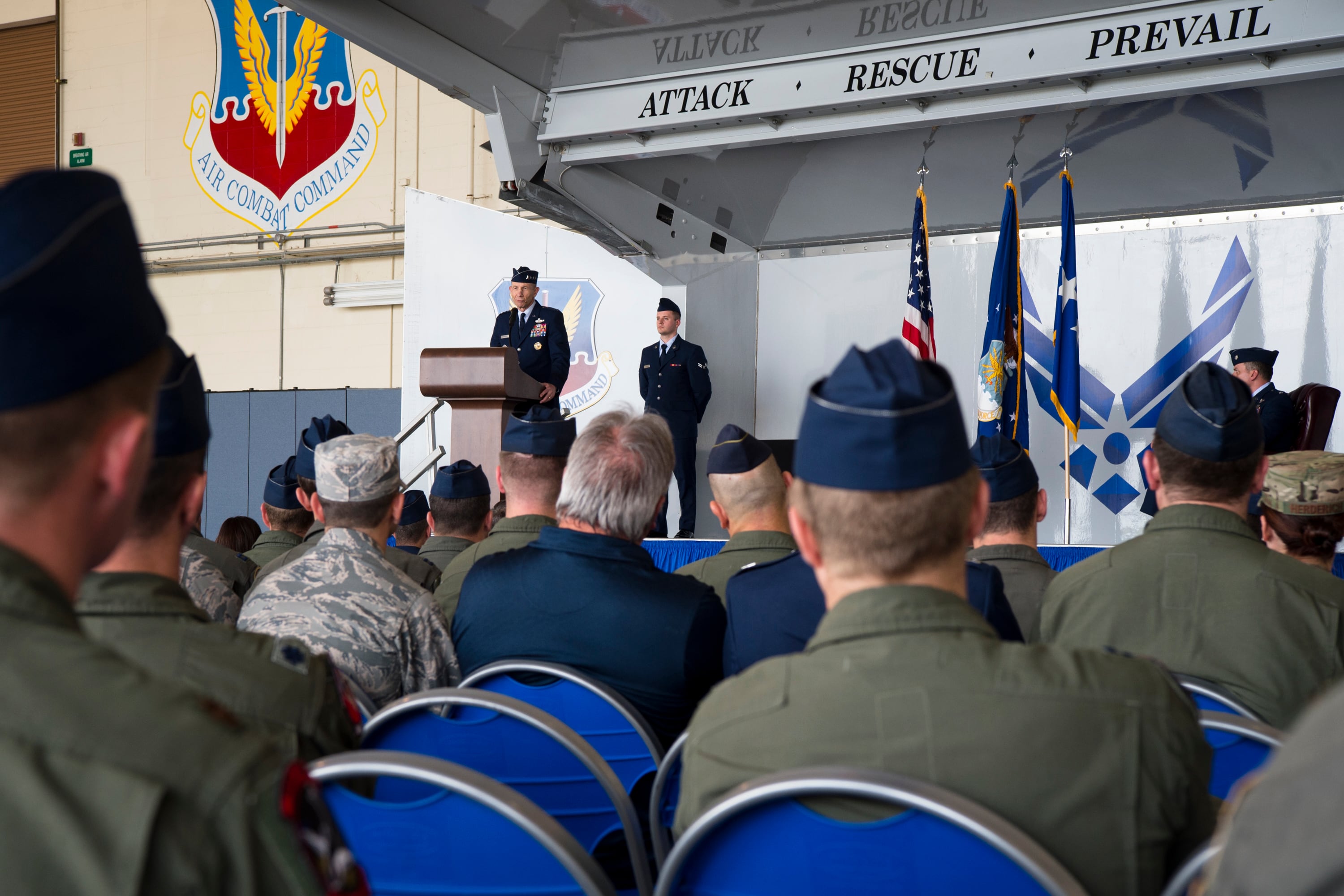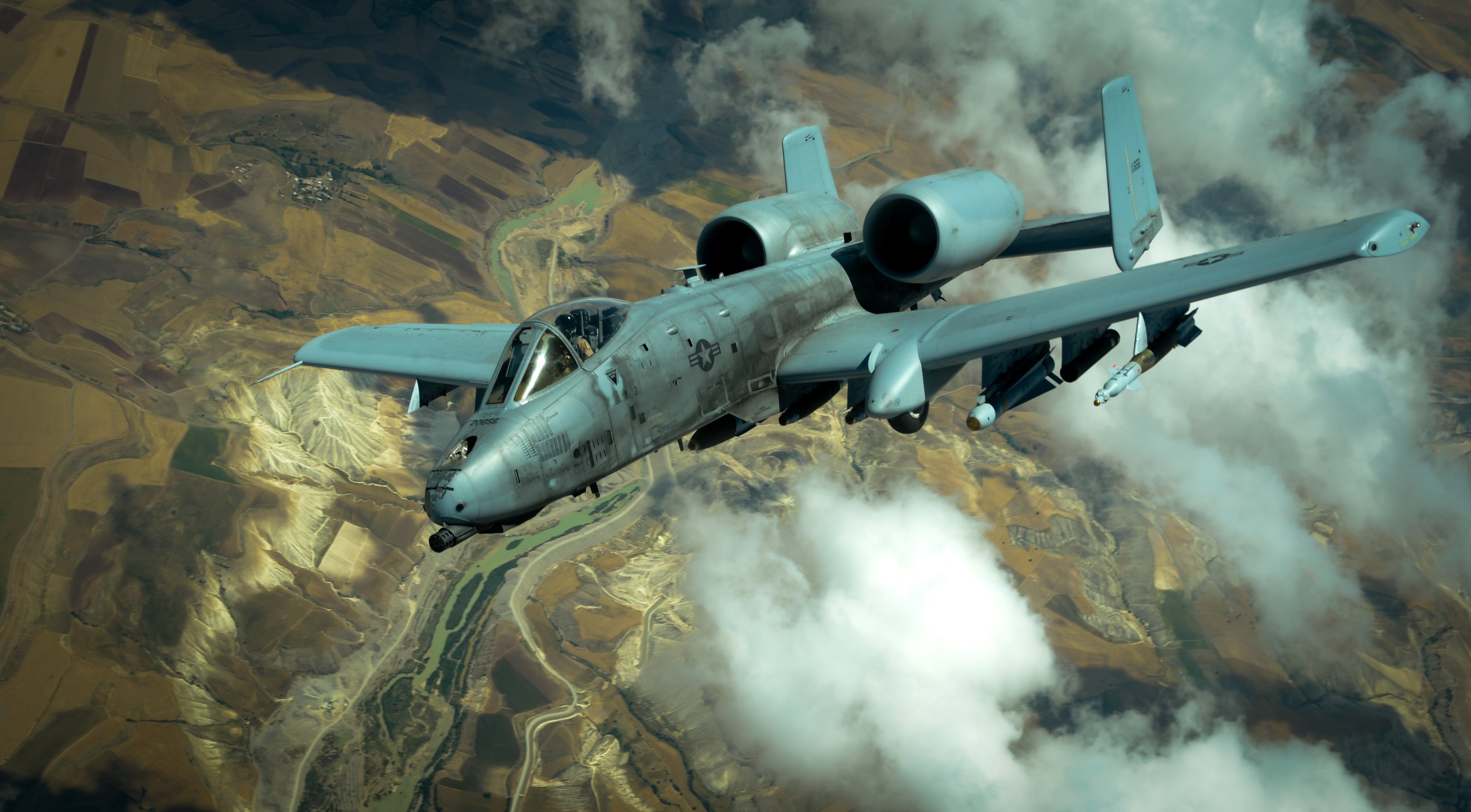The Air Force awarded the Gallant Unit Citation to the 74th Fighter Squadron out of Moody Air Force Base, Georgia, March 14 for its combined actions during close-air support missions against the Islamic State group in Syria.
The squadron struck more than 44 percent of targets in the Operation Inherent Resolve theater over the course of 181 days with only 12 aircraft beginning in the summer of 2017, according to the unit citation.
The Gallant Unit Citation has only been awarded five times since it was created in 2001, according to a service news release. The 74th Expeditionary Fighter Squadron is also the first individual squadron to earn the award.
The citation said the pilots faced persistent surface-to-air threats and repeated intercepts by Russian aircraft while developing “new tactics to strike enemy fighters fortified in deep enemy terrain while protecting civilians and coalition forces.”
The A-10 Warthog pilots from the squadron were working over an urban battlefield assisting friendly troops that primarily consisted of U.S.-backed Syrian Democratic Forces.
The bombing in Raqqa, Syria, which the 74th Fighter Squadron took part in, has also been the subject of frustration from many human rights groups.
“More than 18 months after the capture of Raqqa from ISIS, we haven’t had a proper official accounting of the casualties and destruction which resulted from the U.S.-led assault,” said Chris Woods, director of Airwars, a London-based non-profit that tracks civilian casualties in Syria and Iraq.
“According to locals themselves, several thousand civilians died — most killed when buildings collapsed on top of them during ferocious air and artillery strikes,” Woods told Air Force Times. “More than 70 percent of the city was entirely destroyed, according to the UN."
The SDF partner forces that did the vast majority of ground fighting against ISIS were often forced into difficult combat environments in urban settings, replete with explosive-laden suicide vehicles and militants who had years to prepare their defensive fighting positions.
It became necessary for the SDF to rely on American air power to carve out an advantage against ISIS. The Kurdish-led SDF claims to have lost 11,000 of its own fighters by the end of the campaign in Syria.
“We were trying to strike these snipers that were in this dense urban city and we didn’t have tactics for it," Lt. Col. Craig Morash, 74th Fighter Squadron commander, said in a 23rd Wing video.
The squadron reached out to other units and they put their “smartest guys on it," Morash said. They ultimately came up with new attack plans as the fight against ISIS entered the dense urban setting, which ultimately saved SDF and coalition lives, the pilots said.
The A-10s, which flew out of Incirlik Air Base, Turkey, conducted combat sorties from July 2017 to January 2018.
During the first half of the deployment, the pilots were operating within “danger-close” distances of friendlies, meaning they were at a significantly high risk of injury from the weapons dropped.
“I expected more of the Afghanistan-type mission, and I am getting 9-lines that are like, ‘Hey, I need you to drop this four-story building in a city,’ which is fundamentally different from what we, or what I expected,” said one A-10 pilot in the video.
A 9-line is used by joint terminal attack controllers to uniformly tell aircraft information about targets and friendly locations.
RELATED

Throughout its six-month deployment, the unit flew more than 1,600 sorties, striking nearly 2,500 targets and claiming to kill 3,100 ISIS fighters during the liberation of Raqqa.
Numbers regarding enemy killed in action have historically been unreliable, however.
One A-10 pilot described a particularly challenging airstrike — during his third combat sortie — in an urban area against concealed insurgents.
“We ended up shooting a Maverick [air-to-ground missile] into a building to take out the sniper team that was firing on the SDF," he said.
“I thought it was pretty awesome that we could go out there and affect the infrastructure as much as we did,” a different pilot said. "Going back and looking at what we actually struck and the damage we did was pretty cool.”

The Inherent Resolve coalition has at times come under scrutiny for not recognizing the damage caused by bombing city infrastructure, even when the rules of engagement allow its forces to do so.
“It’s troubling to hear A-10 pilots and commanders talking about being ‘let off the leash’ at Raqqa; of being ordered ‘to drop four story buildings in the city’, and describing the catastrophic damage as ‘pretty cool,'” Woods said. "For civilians on the ground caught in conflict, war is never cool.”
The video in which the comments were made was not intended to make light of warfare, said Capt. Jessica Colby, a spokeswoman for the A-10 squadron.
“The 23rd Wing sincerely hopes that the video did not come across as insensitive or give the illusion that we take the loss of infrastructure and life as anything but serious,” Colby told Air Force Times. “The intention of the video is to highlight these innovative aviators that came together, with other members across the community, to develop groundbreaking tactics to accomplish the mission they were tasked.”
A Pentagon review under Defense Secretary James Mattis did find merit with some human rights groups’ complaints over the course of the Syrian conflict, saying that the U.S. military should refine how it identifies and measures civilian casualties. Then, the U.S. should work harder to compensate the families of those impacted, the review said.
Airwars estimates that there were between 7,500 and 12,200 civilian casualties that resulted from the U.S.-led coalition’s campaign against ISIS.
Those numbers are based on local reporting assessed by the nonprofit as “confirmed” or “fair” in credibility. Airwars reports that there have been as many as 29,000 allegations of U.S.-inflicted civilian deaths, but the group does not deem them all to be credible.
The U.S.-led coalition estimate is far more conservative, at roughly 1,200 confirmed civilian deaths between August 2014 and the end of January 2019. During that time period, the coalition conducted nearly 34,000 airstrikes.
The coalition does re-assess civilian casualties if it deems new and credible information is brought forth.
Kyle Rempfer was an editor and reporter who has covered combat operations, criminal cases, foreign military assistance and training accidents. Before entering journalism, Kyle served in U.S. Air Force Special Tactics and deployed in 2014 to Paktika Province, Afghanistan, and Baghdad, Iraq.





